Steve Marshall sends letter critical of an EPA proposed new rule on Power Plants

Americans are complaining that their power bills are too high. Those bills could be a lot higher if a controversial new U.S. Environmental Protection Agency’s (EPA) proposed new on existing coal, natural gas, and oil-fired power plants goes into effect. On Thursday, Alabama Attorney General Steve Marshall signed a 21-state coalition letter opposing the new EPA proposed rule. The controversial EPA proposal, Marshall claims unlawfully, attempts to use a narrow regulatory provision in the Clean Air Act to force existing power plants into retirement en masse. The U.S. Supreme Court blocked the EPA in a similar scheme just last year in the West Virginia v. EPA decision. “Just as our coalition was successful before the Supreme Court, this letter reminds the EPA that its authority is subject to authorization from Congress,” said Marshall. “As the last line of defense, I will continue to combat these out-of-control agencies who set illegal standards that will lead to devastating economic consequences for our great state.” The letter explains how the authors believe the EPA’s proposal violates the Supreme Court’s 2022 decision. They claim that Congress has not given the EPA statutory authorization to remake the electricity grids. In its latest proposal, the EPA tries to sidestep that decision by forcing a massive shift in electricity production indirectly: by setting standards reliant on theoretical technology that, as it exists today, cannot be used by the regulated power plants to meet the criteria. The result is intended: the plants will close, and the nation’s electrical grid will be transformed without Congress’s input or State involvement in the regulatory process, both of which the Clean Air Act requires. Nationwide, nearly 30 million American households struggle to pay their energy bills and qualify for federal subsidies for impoverished people. According to the latest, preliminary federal data, less than 3% receive it for their summer bills because supply is less than the demand for the program. In May, EPA proposed new regulations for power plants’ greenhouse gas (GHG) emissions, like carbon dioxide. Under the new rules, coal- and gas-fired plants that wanted to stay open would have to lower their GHG output by 90 percent within the next decade or otherwise switch to alternative forms of energy production. The rules are part of President Biden’s pledge “to create a carbon pollution-free power sector by 2035.” The U.S. electric industry has told the EPA that its rules are counterproductive and based on unproven technology. The Edison Electric Institute (EEI) is a trade association that “represents all U.S. investor-owned electric companies,” providing “electricity for nearly 250 million Americans” across all 50 states and Washington, D.C. Tom Kuhn is the EEI President and CEO. “EEI and our member companies support regulations for GHG emissions,” Kuhn said. “We share EPA’s long-term clean energy vision for our sector.” Kuhn said EEI member companies had significantly lowered their carbon outputs below 2005 levels “not because they are forced to by federal regulation, but instead because they are committed to delivering resilient clean energy to their customers.” The EEI expressed concerns that complying with the new rules would be difficult. “Electric companies are not confident that the new technologies EPA has designated to serve as the basis for proposed standards for new and existing fossil-based generation will satisfy performance and cost requirements on the timelines that EPA projects,” the EEI said. “This will impact electric companies’ efforts to deliver affordable and reliable electricity to customers.” It is estimated that the new rules will cost consumers over $900 million in additional electricity costs by 2030 and, if implemented, will make the U.S. electric grid less reliable. The EPA and the Biden Administration insist that the new rules are needed to fight climate change. Attorney General Marshall joined attorneys general from Arkansas, Georgia, Idaho, Indiana, Iowa, Kentucky, Louisiana, Mississippi, Missouri, Montana, Nebraska, New Hampshire, Ohio, Oklahoma, South Carolina, South Dakota, Texas, Utah, and Virginia in the West Virginia-led letter. To connect with the author of this story or to comment, email brandonmreporter@gmail.com.
Gary Palmer applauds SCOTUS decision to limit EPA authority to reduce plant emissions

Today, the Supreme Court issued a decision to limit actions by the Environmental Protection Agency (EPA) and how the nation’s main anti-air pollution law, The Clean Air Act, can be used to reduce carbon dioxide emissions from power plants. By a 6-3 vote, with conservatives in the majority, the court said that the Clean Air Act does not give the EPA broad authority to regulate greenhouse gas emissions from power plants that contribute to global warming. Rep. Gary Palmer applauded the decision, arguing that the EPA is abusing its authority. “Today’s Supreme Court decision to rein in the EPA in regard to the agency’s overreach in regulating greenhouse gases under the Clean Air Act is a long-overdue recognition by the Court that there are limits to the EPA’s authority to legislate through regulation,” Palmer stated. Palmer introduced legislation in 2017 to limit EPA overreach. “Former Rep. John Dingell, the Democrat who helped write the Clean Air Act, stated the EPA was outside of its authority by imposing new rules on greenhouse gas coming from power plants during the Obama Administration. This ruling is consistent with my Stopping EPA Overreach Act I introduced in 2017, which would make it clear the EPA does not have the authority to regulate greenhouse gases and that would reassert the responsibility of Congress to make law.” Palmer concluded, “American families are struggling with inflationary regulatory costs imposed by unelected bureaucrats at the EPA and other federal agencies. Americans didn’t elect the bureaucrats at the EPA to issue inflationary regulations that destroy jobs, increase energy prices and drive up the cost of living. I am grateful for the Supreme Court’s decision reining in the EPA’s overreach.” President Joe Biden called the ruling “another devastating decision that aims to take our country backwards.” He said he would “not relent in using my lawful authorities to protect public health and tackle the climate crisis.”
Supreme Court limits EPA in curbing power plant emissions
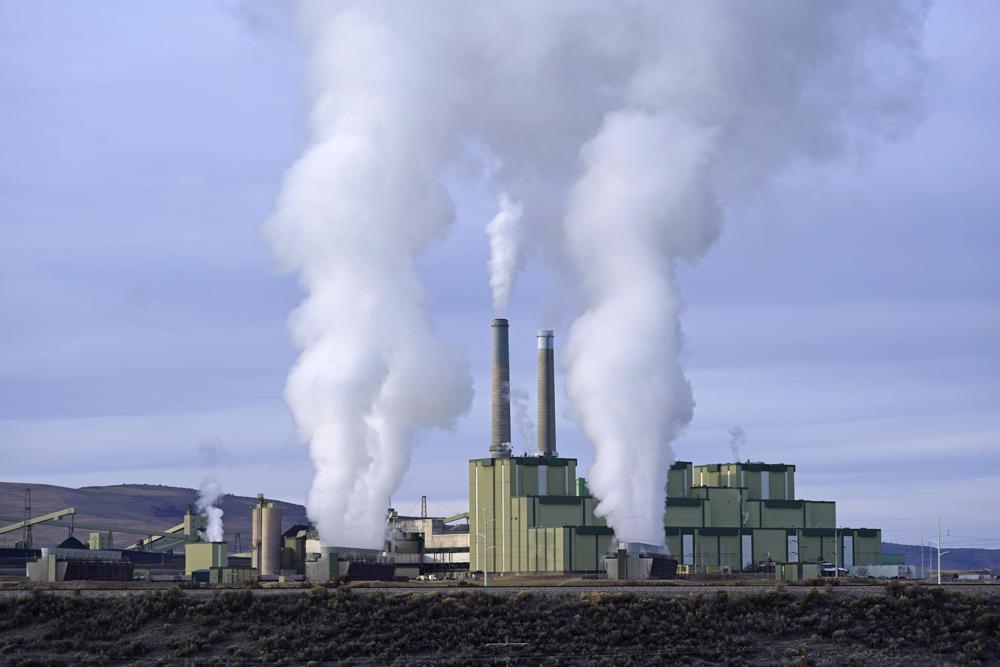
In a blow to the fight against climate change, the Supreme Court on Thursday limited how the nation’s main anti-air pollution law can be used to reduce carbon dioxide emissions from power plants. By a 6-3 vote, with conservatives in the majority, the court said that the Clean Air Act does not give the Environmental Protection Agency broad authority to regulate greenhouse gas emissions from power plants that contribute to global warming. The decision, said environmental advocates and dissenting liberal justices, was a major step in the wrong direction — “a gut punch,” one prominent meteorologist said — at a time of increasing environmental damage attributable to climate change amid dire warnings about the future. The court’s ruling could complicate the administration’s plans to combat climate change. Its detailed proposal to regulate power plant emissions is expected by the end of the year. Though the decision was specific to the EPA, it was in line with the conservative majority’s skepticism of the power of regulatory agencies, and it sent a message on possible future effects beyond climate change and air pollution. The decision put an exclamation point on a court term in which a conservative majority, bolstered by three appointees of former President Donald Trump, also overturned the nearly 50-year-old nationwide right to abortion, expanded gun rights, and issued major religious rights rulings, all over liberal dissents. President Joe Biden aims to cut the nation’s greenhouse gas emissions in half by the end of the decade and to have an emissions-free power sector by 2035. Power plants account for roughly 30% of carbon dioxide output. “Capping carbon dioxide emissions at a level that will force a nationwide transition away from the use of coal to generate electricity may be a sensible ‘solution to the crisis of the day,’” Chief Justice John Roberts wrote in his opinion for the court. But Roberts wrote that the Clean Air Act doesn’t give EPA the authority to do so and that Congress must speak clearly on this subject. “A decision of such magnitude and consequence rests with Congress itself, or an agency acting pursuant to a clear delegation from that representative body,” he wrote. In a dissent, Justice Elena Kagan wrote that the decision strips the EPA of the power Congress gave it to respond to “the most pressing environmental challenge of our time.” Kagan said the stakes in the case are high. She said, “The Court appoints itself—instead of Congress or the expert agency—the decisionmaker on climate policy. I cannot think of many things more frightening.” Biden, in a statement, called the ruling “another devastating decision that aims to take our country backwards.” He said he would “not relent in using my lawful authorities to protect public health and tackle the climate crisis.” And EPA head Michael Regan said his agency will move forward with a rule to impose environmental standards on the energy sector. West Virginia Attorney General Patrick Morrisey, who led the legal challenge to EPA authority, said the “EPA can no longer sidestep Congress to exercise broad regulatory power that would radically transform the nation’s energy grid and force states to fundamentally shift their energy portfolios away from coal-fired generation.” But University of Georgia meteorology professor Marshall Shepherd, a past president of the American Meteorological Society, said of the decision: “It feels like a gut punch to critical efforts to combat the climate crisis which has the potential to place lives at risk for decades to come.” Richard Revesz, an environmental expert at the New York University School of Law, called the decision “a significant setback for environmental protection and public health safeguards.” But he also said in a statement that EPA still has authority to address greenhouse gas emissions from the power sector. EPA Administrator Regan said the agency “will move forward with lawfully setting and implementing environmental standards that meet our obligation to protect all people and all communities from environmental harm.” Senate Democratic leader Chuck Schumer of New York said the consequences of Thursday’s decision “will ripple across the entire federal government, from the regulation of food and drugs to our nation’s health care system, all of which will put American lives at risk.” The court held that Congress must speak with specificity when it wants to give an agency authority to regulate on an issue of major national significance. Several conservative justices have criticized what they see as the unchecked power of federal agencies. Those concerns were evident in the court’s orders throwing out two Biden administration policies aimed at reducing the spread of COVID-19. Last summer, the court’s 6-3 conservative majority ended a pause on evictions over unpaid rent. In January, the same six justices blocked a requirement that workers at large employers be vaccinated or test regularly and wear a mask on the job. Underlying all these issues is a lack of action from Congress, reflecting bitter, partisan disagreements over the role of the federal government. On the environment, Biden’s signature plan to address climate, a sweeping social and environmental policy bill known as Build Back Better, is all but dead amid united opposition from congressional Republicans and conservative Democratic Sen. Joe Manchin from coal state West Virginia. Under a trimmed-down version, the legislation backed by Democrats would offer tax credits and spending to boost renewable power such as wind and solar and sharply increase the number of electric vehicles. The justices heard arguments in the case on the same day that a United Nations panel’s report warned that the effects of climate change are about to get much worse, likely making the world sicker, hungrier, poorer, and more dangerous in the coming years. The power plant case has a long and complicated history that begins with the Obama administration’s Clean Power Plan. That plan would have required states to reduce emissions from the generation of electricity, mainly by shifting away from coal-fired plants. But that plan never took effect. Acting in a lawsuit filed by West Virginia and others, the Supreme Court blocked it in 2016 by a 5-4 vote, with conservatives
Brett Kavanaugh takes hard line on federal regulations
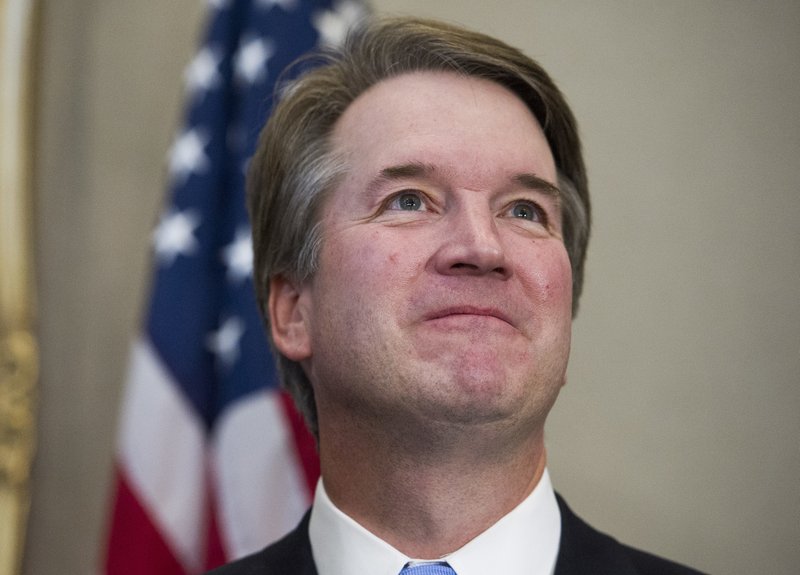
Supreme Court nominee Brett Kavanaugh worries about federal agencies running amok. He has argued that judges have given federal agencies leeway to push policies that go well beyond what Congress allowed. That view has endeared him to conservatives, who believe unelected bureaucrats are foisting radical regulations on Americans with little accountability. Liberals fear Kavanaugh would block business restrictions that are needed to tackle climate change, improve workplace safety and protect consumers. In a dissent last year as a judge on the U.S. Court of Appeals for the District of Columbia Circuit, Kavanaugh cited Supreme Court decisions in claiming that agencies can regulate “major social or economic activities” only if Congress clearly allows them to do so. Placing controls on cigarettes, banning physician-assisted suicide and imposing rules on greenhouse gas emitters are examples of such major action, he said. Kavanaugh’s approach to what conservatives call the “administrative state” hasn’t received the kind of attention given to marquee issues such as abortion and presidential powers since he was nominated by President Donald Trump to replace Justice Anthony Kennedy. But it’s an area where, if he’s confirmed, his presence on the court could mark a significant shift. If Kavanaugh aligns with other conservative justices in cases dealing with regulatory agencies, their opinions could ultimately affect a wide swath of American life. Under a widely followed judicial philosophy, courts generally step aside and give agencies broad leeway when a law is unclear. Kavanaugh, though, advised judges in a 2016 Harvard Law Review article to instead “seek the best reading of the statute” to see whether the regulation fits with it. He said this would “help prevent a runaway executive branch that exploits ambiguities in governing statutes to pursue its broad policy aims, even in situations where Congress has not enacted legislation embodying those policies.” Kavanaugh’s concern is that agencies are assuming powers that belong to Congress and the judiciary, said Ashley Baker, director of public policy for the Committee for Justice, a conservative legal and policy advocacy organization. She said Kavanaugh’s nomination was a “big step in the right direction” of establishing the authority of courts to interpret federal laws instead of giving agencies a blank check when laws are ambiguous. Kavanaugh — often in dissent — has rejected a wide variety of federal regulations and sought to rein in agencies, according to an Associated Press review of his 12 years on the D.C. appeals court, along with other writings and speeches. He also has displayed skepticism of independent federal agencies that are not answerable to the president. He wrote in dissent in January that he would have found that the structure of the Consumer Financial Protection Bureau — the agency charged with protecting consumers against debt collectors and banks — was unconstitutional because it was headed by one person, not a board or commission, and the president did not have the authority to fire its head. The full D.C. Circuit upheld the structure of the bureau that Congress created in the wake of the 2008 financial crisis, reasoning that a degree of independence would prevent problems that handicapped past regulators. Kavanaugh has objected to Environmental Protection Agency regulations on greenhouse gases; the Federal Communications Commission’s net neutrality rule requiring an equal playing field on the internet; and IRS requirements for paid tax preparers. All went beyond what Congress allowed by law, he said. In 2014, Kavanaugh dissented from the majority opinion upholding a safety citation by the Labor Department against SeaWorld following the drowning of a trainer by a killer whale during a 2010 show in Orlando, Florida. Kavanaugh said many sports and entertainment shows are dangerous, but the Labor Department has not “traditionally been thought of as the proper body to decide whether to ban fighting in hockey, to prohibit the punt return in football, to regulate the distance between the mound and home plate in baseball, to separate the lions from the tamers at the circus, or the like.” The ruling reflects Kavanaugh’s “deep and visceral opposition to the notion that the institutions created by Congress should be able to protect workers, clean air, clean water, consumers — everyday Americans,” said Daniel Goldberg, legal director of the Alliance For Justice, a liberal judicial advocacy group that opposes Kavanaugh’s confirmation. Kavanaugh is critical of a standard known as the Chevron doctrine, established by a 1984 Supreme Court ruling. Under Chevron, courts mostly defer to experts at the federal agencies when deciding whether regulations are consistent with law. The idea is that Congress often writes ambiguous laws, so agencies have to craft regulations to fill in the details. Kavanaugh said his time working for the administration of George W. Bush showed him the perils of the doctrine. “From my more than five years of experience at the White House, I can confidently say that Chevron encourages the Executive Branch (whichever party controls it) to be extremely aggressive in seeking to squeeze its policy goals into ill-fitting statutory authorizations and restraints,” he wrote in the Harvard Law Review article. Bernadette Meyler, a Stanford University law professor who has studied Kavanaugh’s regulatory decisions, said his view devalues agencies’ expertise and demands a level of clarity and specificity that lawmakers can’t provide. “Trying to cut back on regulatory agencies reduces the extent to which expertise is really relevant in decision-making,” she said. To be sure, Kavanaugh has also upheld regulations and forced agencies to implement rules required by Congress. He joined the majority in a ruling that upheld a ban on e-cigarette use on planes and wrote a unanimous opinion that rejected a challenge to stricter controls on a type of pollutant produced mostly by cars and power plants. In a July 2013 ruling, Kavanaugh in a 2-1 decision sided with environmental groups who objected to the EPA’s decision to defer regulation of carbon dioxide from sources other than fossil fuels. Kavanaugh said the Clean Air Act did not allow the EPA to put off those regulations. “Judge Kavanaugh is a fair and impartial jurist whose evenhanded
Luther Strange calls on EPA to cancel rule to limit emissions from modified cars
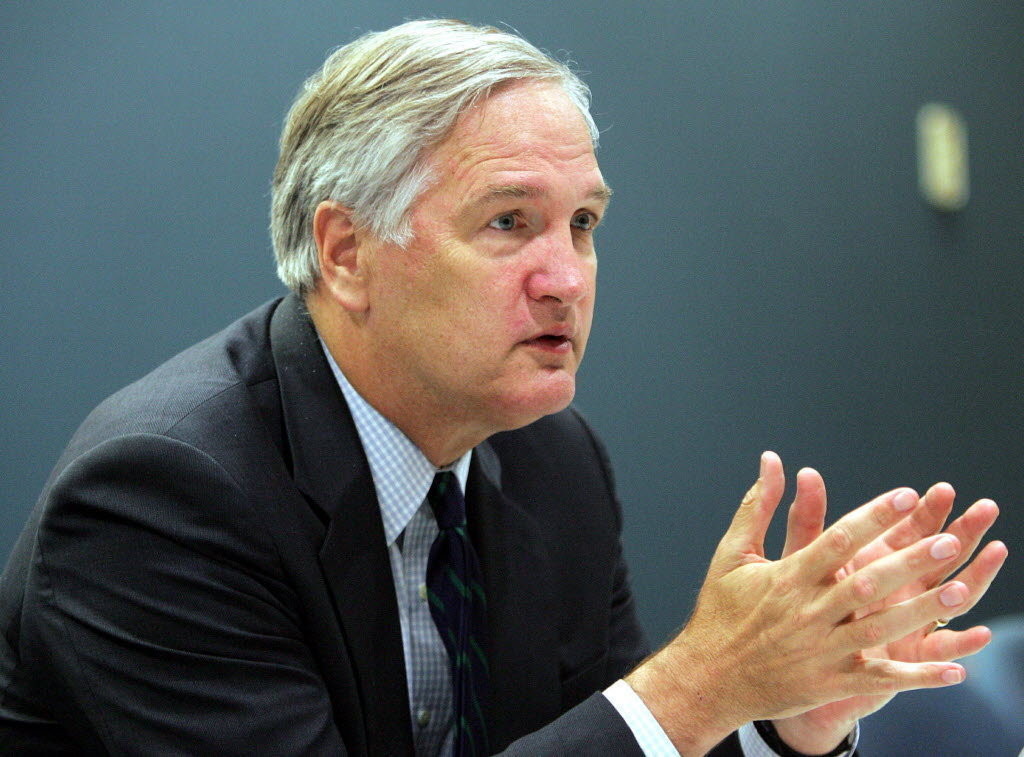
Alabama Attorney General Luther Strange is calling on federal environmental authorities to drop a proposal that would stop off-road racing hobbyists from removing or reconfiguring emissions control devices on modified street vehicles. Strange joined Attorneys General from seven other states in sending a letter to EPA Administrator Gina McCarthy asking her not to implement the proposed rule, saying it would effectively stall the industry related to conversion of street vehicles to racing vehicles. “In another example of federal bureaucrats seeking to expand their regulatory reach, the EPA is pushing a proposed change to the federal Clean Air Act to effectively prohibit street vehicles from being converted into off-road race cars,” said Strange. Strange said the move by regulators, if implemented, would be an economic blow to mechanics and parts suppliers who participate in the cottage industry of car modification. “In Alabama and across the country, modifying race cars is a popular pastime and a significant contributor to the economy,” said Strange. “In 2014, $36 billion was spent nationally on automotive specialty equipment parts and accessories. Off-road racing parts businesses which sell their products in Alabama and elsewhere, as well as local racetracks, would be adversely affected by the implementation of the new EPA rule.” The proposed rule mandates that “Certified motor vehicles and motor vehicle engines and their emission control devices must remain in their certified configuration even if they are used solely for competition or if they become non-road vehicles or engines.” The letter from Strange and the other attorneys general claims the EPA rule change is contrary to existing statute, and conflicts with the expressed intent of Congress not to subject race cars to the same federal emission standards as street vehicles. According to Strange, potecting race cars from emissions requirements was such a concern when Congress passed the Clean Air Act in 1970 that Alabama Congressman Bill Nichols – who represented Talladega, the notorious hometown of Deep South auto racing – specifically asked that the environmental reform law not penalize “vehicles and vehicle engines manufactured for, modified for or utilized in organized motorized racing events.” The other state joining Strange were Arkansas, Georgia, Louisiana, Michigan, Nevada, Ohio, and West Virginia, all states with Republican attorneys general.
Court orders EPA to redo air-pollution limits in 13 states
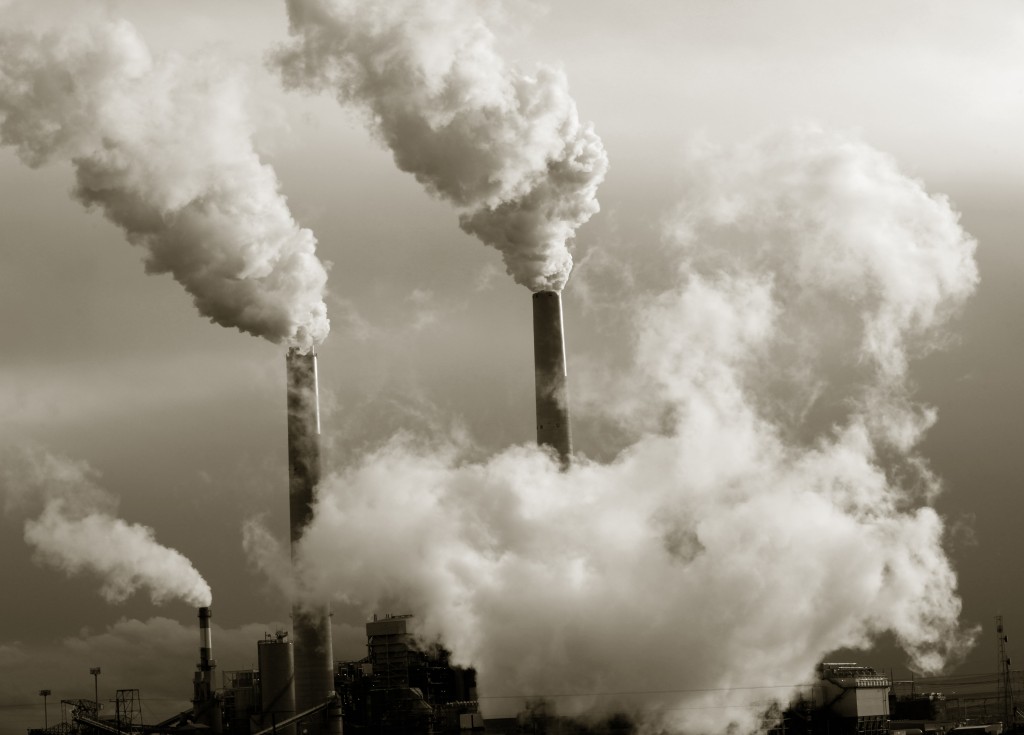
A federal appeals court on Tuesday ordered the Environmental Protection Agency to relax some limits it set on smokestack emissions that cross state lines and taint downwind areas with air pollution from power plants. At the same time, the court upheld the EPA’s right to impose the clean-air standards, rejecting an argument by states and industry groups that the rule was overly burdensome. The ruling by the U.S. Court of Appeals for the District of Columbia Circuit orders the EPA to redo sulfur-dioxide and nitrogen-oxide standards for 13 states, mostly in the South and Midwest, that contribute to soot and smog along the East Coast. Texas and South Carolina would see limits for both forms of pollution adjusted, while new limits for either sulfur dioxide or nitrogen oxides would be set in 11 other states: Alabama, Florida, Georgia, Maryland, New Jersey, New York, North Carolina, Ohio, Pennsylvania, Virginia and West Virginia. The ruling follows a Supreme Court decision last year upholding the so-called Cross-State Air Pollution Rule, which blocks states from adding to air pollution in other states. The April 2014 ruling was an important victory for the Obama administration and capped a decades-long effort by the EPA to ensure that states are good neighbors and don’t contribute to pollution problems elsewhere. Industry groups and many of the affected states have cast the rule as an attempt to step on states’ rights and shut down aging coal-fired power plants as part of what many Republicans call a “war on coal” by the Obama administration. An EPA spokeswoman said the agency was pleased that the court decision keeps the Cross-State Air Pollution Rule in place “so that it continues to achieve important public health protections.” The EPA remains committed to working with states and power companies as it moves to implement the rule, spokeswoman Melissa Harrison said. “We are reviewing the decision and will determine any appropriate further course of action once our review is complete,” she said. The Supreme Court said the EPA, under the Clean Air Act, can implement federal plans in states that do not adequately control downwind pollution. But the court also ruled that the EPA can consider the cost of pollution controls and does not have to require states to reduce pollution by the precise amount they send to downwind states. The appeals court, in its ruling, said the EPA’s rule imposed overly strict limits on the 13 upwind states. As a practical matter, the limits would result in downwind states “overachieving” air quality standards for harmful pollutants, the court said. Frank O’Donnell, president of Clean Air Watch, an environmental advocacy group, scoffed at the idea that the EPA rule was overly strict. “The reality is we need more pollution control of power plants, not less,” he said, noting that the pollution standards used by the EPA were developed in the 1990s. “The targets involved in this case are so outmoded that they are almost irrelevant,” O’Donnell said. “We know in reality that these power plants are going to have to clean up even more to meet modern standards,” O’Donnell added, referring to new EPA rules on soot and smog expected in the next few months. The EPA also is expected to release a final rule as soon as next week on a historic plan to limit carbon pollution from coal-fired power plants. EPA Administrator Gina McCarthy has said the agency will be flexible and work with states on the first-ever controls on power plants for the gases blamed for global warming. Ross Eisenberg, vice president of the National Association of Manufacturers, called the court ruling a disappointment because it upholds the current regulation. “We are committed to clean air and water…but need balanced, achievable regulations that don’t leave manufacturers in constant regulatory limbo as the courts interpret overly aggressive policies,” he said. With the greenhouse gas and ozone regulations expected soon, “the need for that balance has never been greater,” he added. The EPA says the Cross-State Pollution Rule would cost power-plant operators about $800 million a year. Those investments would be far outweighed by the hundreds of billions of dollars in health-care savings from cleaner air, the agency said. The rule could prevent more than 30,000 premature deaths and hundreds of thousands of illnesses each year, the EPA said. Republished with permission of The Associated Press.
U.S. Supreme Court rejects president’s attempt to limit power plants
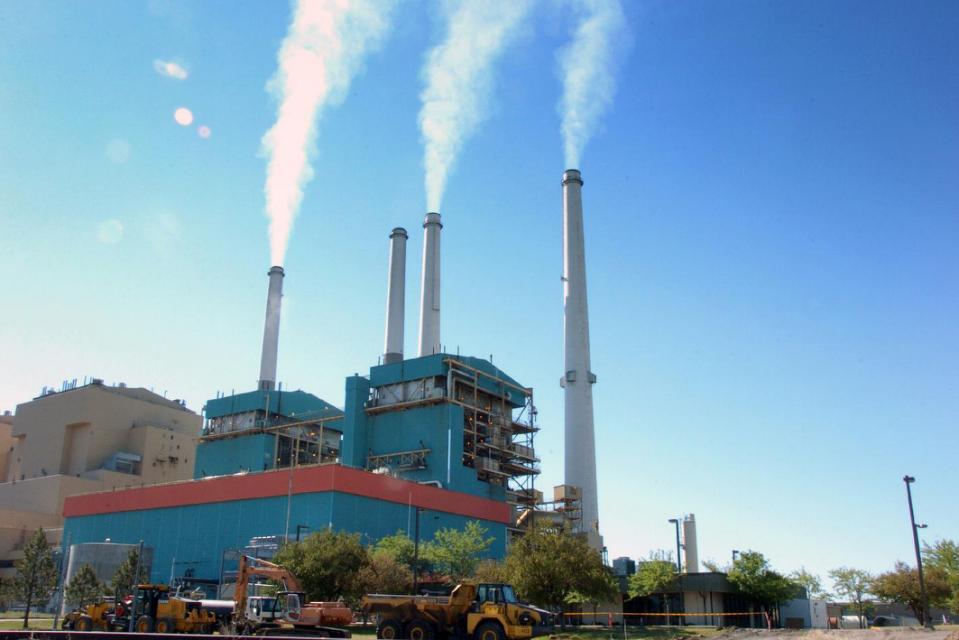
The U.S. Supreme Court ruled Monday against the Obama administration’s attempt to limit power plant emissions of mercury and other hazardous air pollutants, but it may only be a temporary setback for regulators. The justices split 5-4 along ideological lines to rule that the Environmental Protection Agency did not properly take costs into account when it first decided to regulate the toxic emissions from coal- and oil-fired plants. The EPA did factor in costs at a later stage, when it wrote standards that are expected to reduce the toxic emissions by 90 percent. But the court said that was too late. The rules, which took effect in April, will remain in place while the case goes back to a lower court for the EPA to decide how to account for costs, environmental advocates say. They were supposed to be fully in place next year. At issue was whether health risks are the only consideration under the Clean Air Act. The challenge was brought by industry groups and 21 Republican-led states, which argued that the regulations were too costly for coal miners, businesses and consumers. Writing for the court, Justice Antonin Scalia said the EPA was unreasonable in refusing to consider costs at the outset. “The agency must consider cost – including, most importantly, cost of compliance – before deciding whether regulation is appropriate and necessary,” Scalia said. In dissent, Justice Elena Kagan said it was enough for the EPA to consider costs later in the process. “Over more than a decade, EPA took costs into account at multiple stages and through multiple means as it set emissions limits for power plants,” Kagan said. She was joined by the court’s liberal members. The EPA said it is reviewing the court’s decision and will determine any appropriate next steps once a review is completed. “EPA is disappointed that the Supreme Court did not uphold the rule, but this rule was issued more than three years ago, investments have been made and most plants are already well on their way to compliance,” EPA spokeswoman Melissa Harrison said. Indeed, more than 70 percent of power plants already have installed controls to comply with the rules, said Vicki Patton, an attorney at the advocacy group Environmental Defense Fund. “EPA already has an economic analysis that it can rely on to demonstrate that the public health benefits of the standards far outweigh the costs,” Patton said. The case is the latest in a string of attacks against the administration’s actions to use the Clean Air Act to rein in pollution from coal-burning power plants. Senate Majority Leader Mitch McConnell of Kentucky called the ruling “a cutting rebuke to the administration’s callous attitude.” He said it “serves as a critical reminder” to state governors, who are awaiting more EPA rules this summer aimed at curbing pollution from coal-fired power plants that is linked to global warming. States have already challenged those rules even before they are final, and Congress is working on a bill that would allow states to opt out of any rules clamping down on heat-trapping carbon dioxide. White House spokesman Josh Earnest called out McConnell for reprising his suggestion that governors should flout EPA regulations. He said McConnell was not advocating in the best interests of the American public. House Speaker John Boehner, R-Ohio, suggested that the high court ruling gives opponents an opening “to protect the jobs and energy that are still at risk under this administration.” In the case of the mercury rules, the costs of installing and operating equipment to remove the pollutants before they are dispersed into the air are hefty — $9.6 billion a year, the EPA found. But the benefits are much greater, $37 billion to $90 billion annually, the agency said. The savings stem from the prevention of up to 11,000 deaths, 4,700 nonfatal heart attacks and 540,000 lost days of work, the EPA said. Mercury accumulates in fish and is especially dangerous to pregnant or breastfeeding women, and young children, because of concern that too much could harm a developing brain. A disproportionate share of the 600 affected power plants, most of which burn coal, are in the South and upper Midwest. Republished with permission of the Associated Press.
Gary Palmer backs EPA ‘overreach’ bill delaying new emissions rules
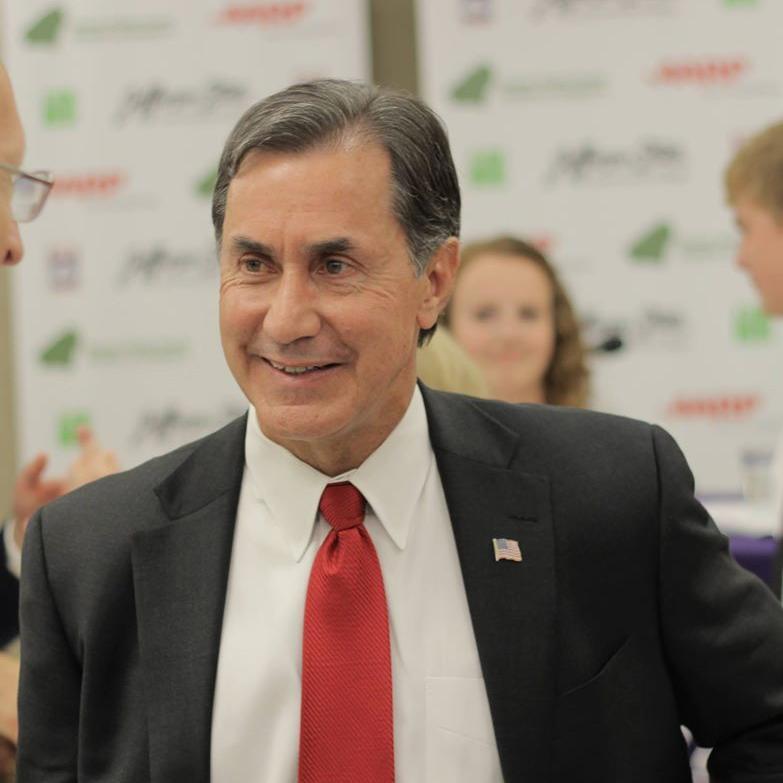
On Wednesday, U.S. Rep. Gary Palmer took part in a dual effort in Congress to stop what he called “overregulation” aimed at delaying the implementation of new rules under the federal Clean Air Act of 1963. Palmer said the regulatory changes were coercive in nature and constitute a de facto regressive tax increase as he argued in favor of the “Ratepayer Protection Act,” which passed the House 287-180 yesterday and now goes before the Senate for a vote. Palmer, who represents Alabama’s 6th congressional district based in the suburbs of Birmingham, offered a scathing critique of the Environmental Protection Agency, whose power to tighten restrictions on energy production as part of new so-called Clean Power Plant requirements is authorized under the Clean Air Act. “The EPA makes a habit out of claiming more authority than it rightfully has, particularly under this Administration,” said Palmer in a news release Wednesday. “The EPA’s proposed ‘Clean Power Plant’ rule is an example of this. This rule would require power plants to reduce emissions by 30% in the next 15 years in order to achieve little to no environmental benefit. According to the NERA, an economic consulting and analysis firm, this proposal would cost between $41 and $73 billion per year. There is a strong possibility this rule will be struck down in court. In the meantime, it could do significant economic damage. “This rule amounts to a massive tax increase on those Americans least able to pay it. The Ratepayer Protection Act would shield states from being forced or coerced into complying with this unwise and possibly illegal rule. I am glad to support this first step toward rolling back EPA’s overregulation.” Palmer is a member of the Science, Space and Technology Subcommittee on the Environment. In a meeting of the panel yesterday on Capitol Hill, the first-term Republican inveighed against the EPA’s alleged incursions into the legislative branch and vowed to oppose any measure that would raise the price of domestic energy production. Alabama’s 6th congressional district is tied with Texas’ 13th district as the most Republican-leaning in the nation. Cook Political Report rates it “R +28.”
Climate change plan faces high-profile legal test
The centerpiece of the Obama administration’s effort to tackle climate change is facing a high-profile legal test as a federal appeals court considers a plan that has triggered furious opposition from Republicans, industry figures and coal-reliant states. The U.S. Court of Appeals for the D.C. Circuit hears arguments Thursday in two cases challenging the Environmental Protection Agency’s ambitious proposal to slash carbon pollution from the nation’s coal-fired power plants that is blamed for global warming. The lawsuits — one from a coalition of 15 states and another brought by Murray Energy Corp., the nation’s largest privately held coal mining company — are part of a growing political attack from opponents who say the move is illegal and will kill jobs, cripple demand for coal and drive up electricity prices. The rule proposed by the Environmental Protection Agency last year requires states to cut carbon emissions by 30 percent by 2030. It gives customized targets to each state, leaving it up to them to draw up plans to meet the targets. EPA officials say the rule would protect public health, fight climate change and lower electricity costs by 8 percent by 2030. But a backlash has been building. Last month, Senate Majority Leader Mitch McConnell, R-Ky., sent a letter urging the governors of all 50 states to defy the EPA by refusing to submit the compliance plans. Opponents also are getting support from an unlikely ally, Harvard Law professor Laurence Tribe, an Obama mentor who has infuriated liberals by denouncing the EPA rule as unconstitutional. “Burning the Constitution should not become part of our national energy policy,” Tribe told a House committee last month, representing Peabody Energy Corp., the world’s largest private-sector coal company. At issue before the court is whether the EPA has legal authority for its plan under the Clean Air Act. The agency and environmental advocacy groups have urged the court to throw the cases out as premature, since the agency won’t issue a final rule until this summer. David Doniger, director of the Natural Resources Defense Council’s climate and clean air program, called the lawsuits a ploy “to dress up the political attacks being led by Mitch McConnell in the Senate and others in the House.” But Murray Energy and the states say the court should issue a rare “extraordinary writ” to stop the EPA from taking action beyond its power even before the rule becomes final. “The stakes are so high, and delay will waste enormous amounts of industry, state, and federal resources and result in increased coal-fired power plant retirements that cannot be later remedied,” the company said in court documents. West Virginia and other states argue that the plan is illegal because coal-fired power plants already are regulated under a separate section of the Clean Air Act. They say the law prohibits “double regulation.” The legal debate focuses on dueling provisions added by the House and Senate to the Clean Air Act in 1990. Instead of trying to reach a compromise, Congress included both. The rule’s opponents want EPA to abide by the House language, which says if an industry is already regulated under one section of the law, it can’t be regulated under a different part. The EPA prefers the Senate version, arguing that the agency is only barred from regulating pollutants covered by another section. In this case, the agency says, the law allows it to regulate carbon dioxide, which is not already regulated under a different part of the law. Courts typically defer to an agency’s interpretation when the law is ambiguous. Tribe, the Harvard professor, also is getting a few minutes of time before the court Thursday to argue that the proposal also infringes on the right of states and the role of Congress in violation of the Constitution. All three judges on the panel hearing the case were appointed by Republican presidents. The states challenging the EPA’s proposed rule are Alabama, Alaska, Arkansas, Indiana, Kansas, Kentucky, Louisiana, Nebraska, Ohio, Oklahoma, South Carolina, South Dakota, West Virginia, Wyoming and Wisconsin. Republished with permission of The Associated Press.


